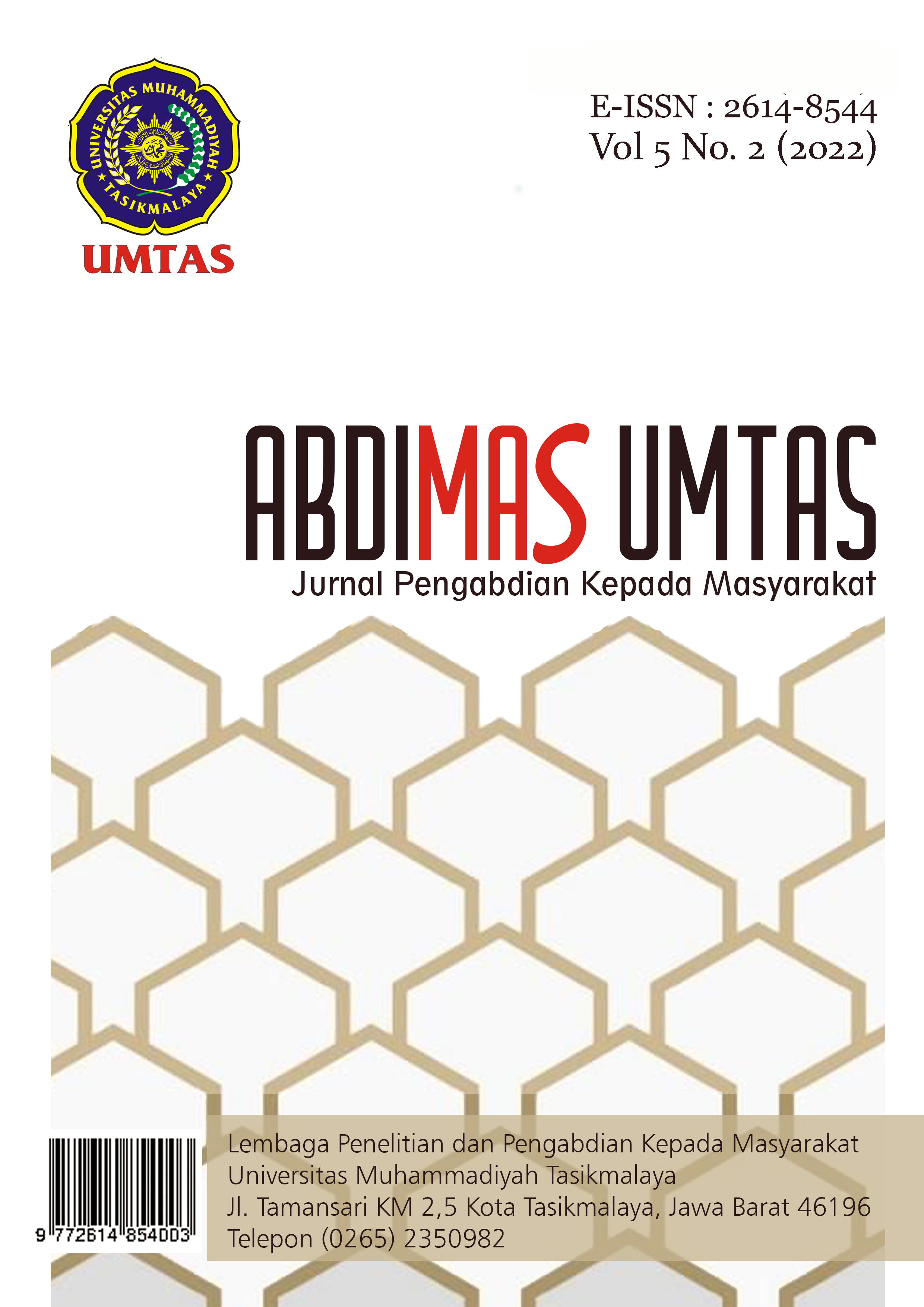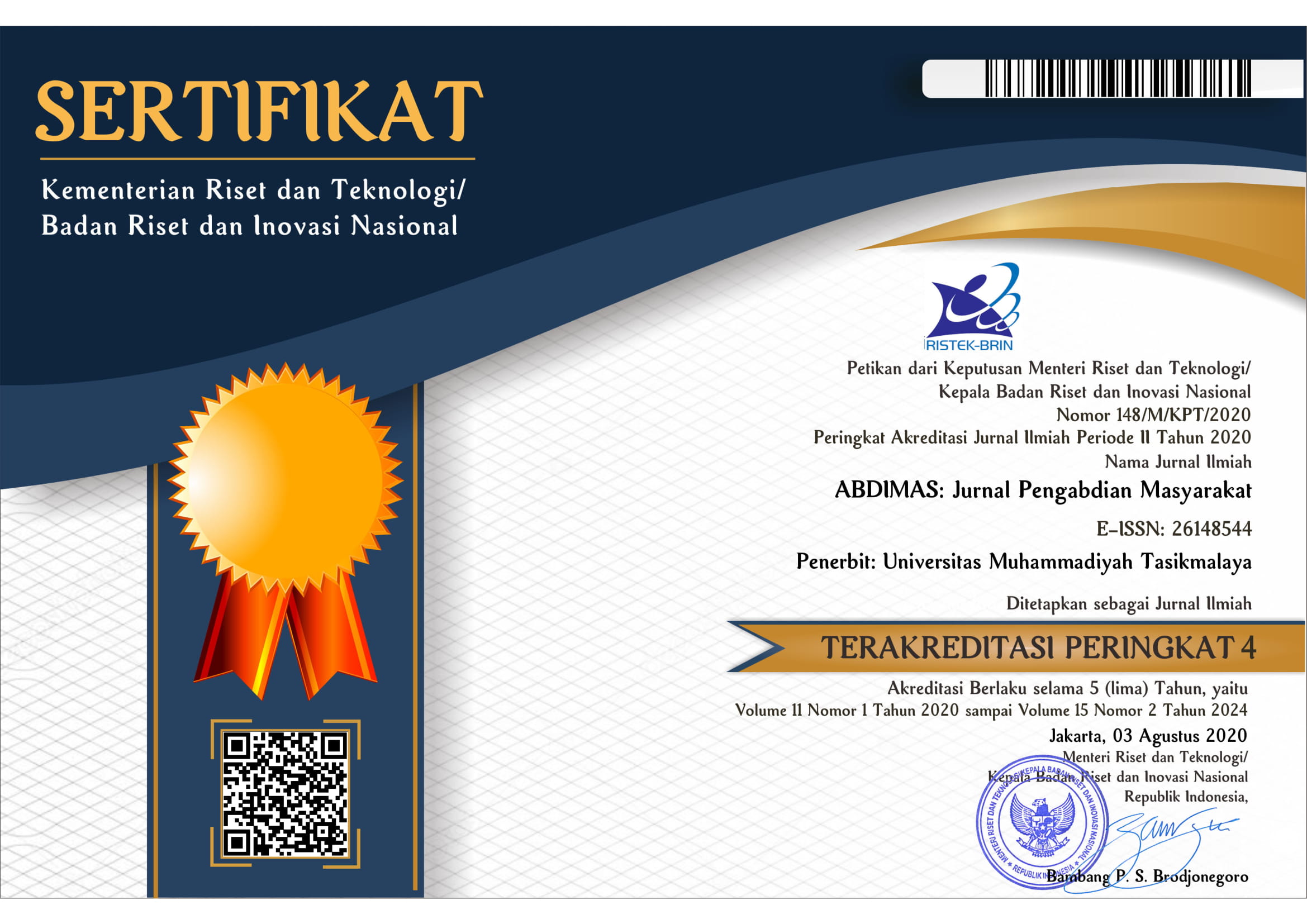Dissemination of Household Waste Processing into Eco-Enzyme Products
DOI:
https://doi.org/10.35568/abdimas.v5i2.2642Keywords:
Eco-enzyme, sampah rumah tangga, lingkunganAbstract
One of the environmental problems that occur in each region is the problem of waste. The waste produced by every household is certainly something, whether it is organic waste or inorganic waste. Organic waste that is not managed properly will cause global warming (global warming). Besides that, it can also cause potential health hazards such as diarrhea, cholera, typhus, and dengue fever due to viruses, bacteria, or fungi. We are seeing the potential for organic waste in Ganting village, where the livelihoods of the people there are generally vegetable and fruit farmers, such as spinach, kale, corn, and others. Efforts that can be made to reduce the negative impact of residual organic matter in Ganting village are socialization regarding the processing of food waste into more useful products, namely "Eco-enzyme Manufacturing". The method of making Eco-enzyme is by fermenting the remaining organic materials in anaerobic conditions with the help of living organisms derived from organic materials. The methods used in this socialization activity include counseling (education), discussion (question and answer), and demonstration. The results of the manufacture of this Eco-enzyme have met the established indicators, where the Eco-enzyme produced has an acidic pH of 3-4, a distinctive citrus fruit smell and slightly alcohol-scented, a clear brownish color, and is not overgrown with maggots or fungi. This outreach activity has increased the knowledge and skills of the target audience about the manufacture of Eco-enzyme from household organic waste and the importance of Eco-enzyme to preserve the environment and health of the earth.














